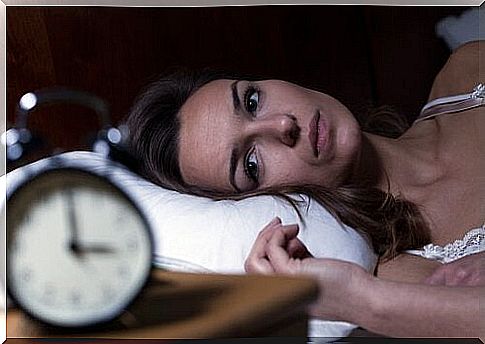Changes In Sleep Patterns Can Predict Degenerative Diseases


Sleep disorders and sleep-related problems do not only affect people who have neurodegenerative diseases, such as Parkinson’s, dementia or Alzheimer’s.
They modify the normal development of one’s dream cycle and can interfere with a person’s mental, emotional or physical function.
The most important changes in sleep patterns are:
- Sleep apnea (pause in breathing)
- Bedwetting (especially children)
- Insomnia (poor, inadequate or restless sleep)
- Restless legs (limbs moving continuously at night)
- Sleep paralysis (waking up in the REM phase when the brain is active, but without the body waking up, with the exception of the eyes)
- Nightmares (abrupt and frightening awakening)
- Go to sleep (walk or do other activities while sleeping)
- Narcolepsy (falls asleep at any time or place without notice
There are also other less common sleep disorders, such as:
- Idiopathic hypersomnia (change in normal resting time and the need to sleep 4 extra hours a day)
- Recurrent hypersomnia (sleeps up to 20 hours for days)
- Idiopathic insomnia (neurological disorder in the wake / sleep cycle that causes problems when waking up or regulating sleep)

According to a study by the Neurology Service at the Hospital Clinic in Barcelona, your behavior during the REM phase may explain or alert you to certain diseases, such as Parkinson’s or senile dementia.
Patients who suffer from nightmares about being attacked or abused, and who kick or cry during the REM phase, may suffer from neurodegenerative diseases in the future due to lack of dopamine in their brains.
Patients can visit a sleep clinic to have some diagnostic tests performed that analyze the type of disorder that is affecting them. Then they can identify what it might mean for their future.
Such an analysis is performed on an outpatient basis in the hospital or clinic. Doctors compare the behavior during the REM phase with the likelihood of developing a disease.
Sleep disorders can be a sign of prevention of narcolepsy, a stroke or drowsiness. They can also detect breathing problems such as sleep apnea and snoring.

In addition to helping patients with sleep-related respiratory disorders, the hospital in Spain also offers sleep medicine and examines the relationship between epilepsy and sleep disorders.
According to neurologist Maria Gudin , it is difficult to differentiate an epileptic seizure with a problem in a dream.
Her colleague Mercedes Munoz claims that Parkinson’s disease (the second most common neurodegenerative disease) is more common in people suffering from insomnia, as well as anxiety and depression.
- Hypersomnia occurs in 80% of patients with Parkinson’s disease.
- Sleep behavior problems that occur in the REM phase affect 40%.
- Restless legs syndrome affects 20%.
This means that more sleep patterns are common among patients with neurodegenerative diseases and this can affect their quality of life.
Understand sleep habits
Their sleep habits may be an initial manifestation of the disease, making it important to approach them from a therapeutic point of view.
Dr. Estefania Segura compared the primary sleep disorders with the prevalence of mental illness: schizophrenia, depression, anxiety or bipolar disorder.
They are all related to sleep problems. The same goes for general anxiety and post traumatic stress disorder.
An article claims that an increase in life expectancy is associated with a greater number of people with dementia in general and Alzheimer’s disease in particular.
Old age, Alzheimer’s and sleep disorders are strongly linked. When combined with a genetic predisposition and external factors, they can seriously affect the patient’s quality of life.
For many patients, sleep disorders lead to hospitalization. In these cases, the changes in their sleep patterns are much more severe than for those who have no associated disease.
Characteristics of sleep disorders for those with Alzheimer’s are:
- Increased movements
- Reductions in SWS (Slow-Wave-Sleep) and REM (Rapid Eye Movement)
- Drowsiness during the day
Damage to neurons that keep them asleep is the main cause of these sleep problems.
The hypothalamus and your inner clock are responsible for sleeping and waking, but for these people they are not synchronized.









